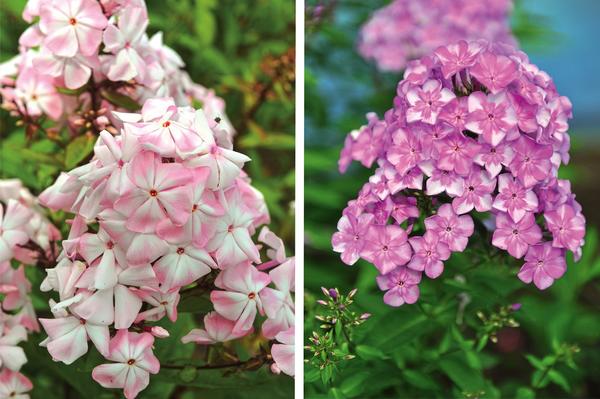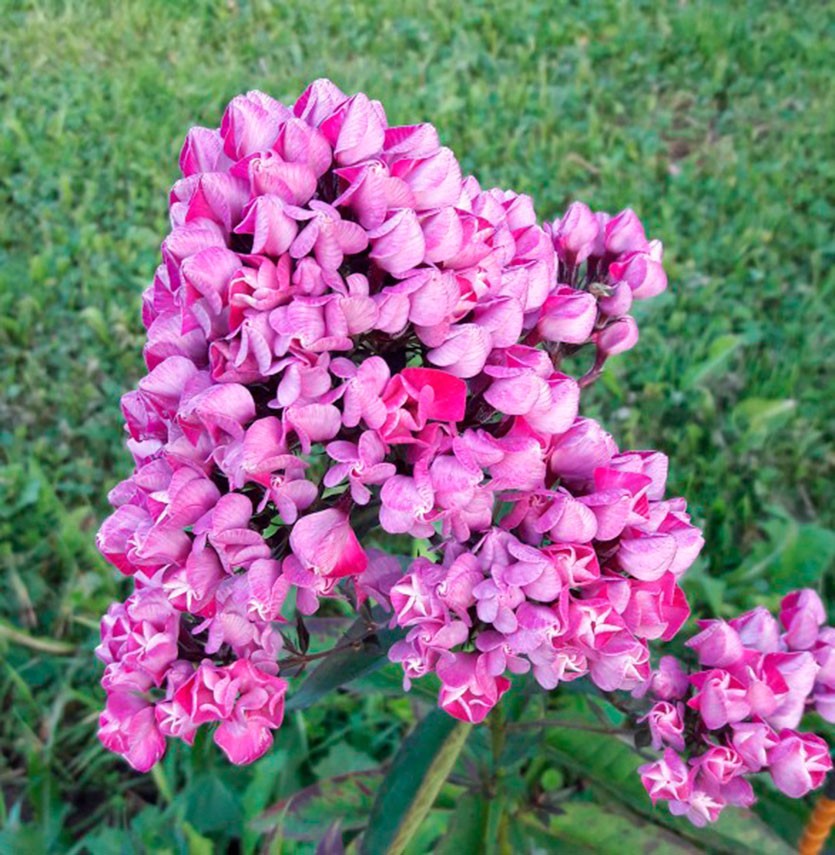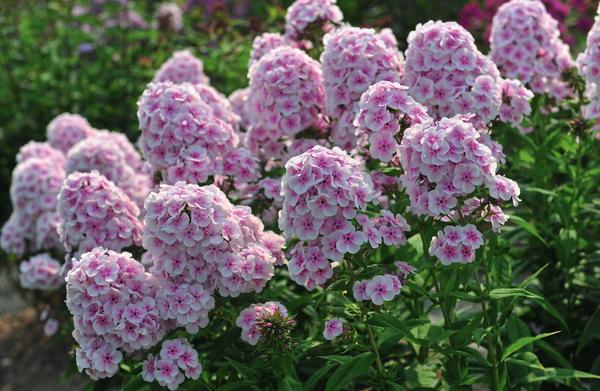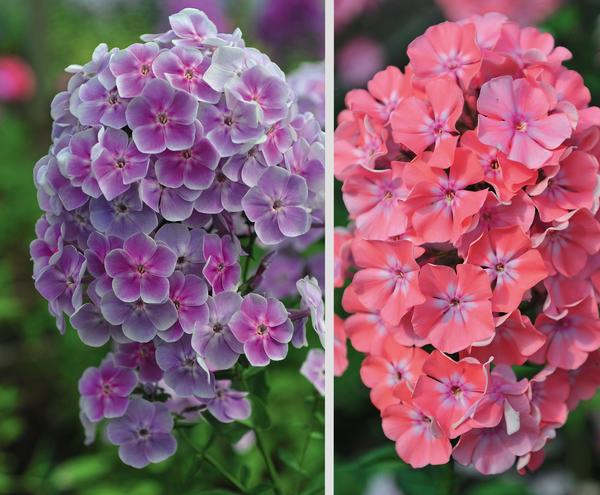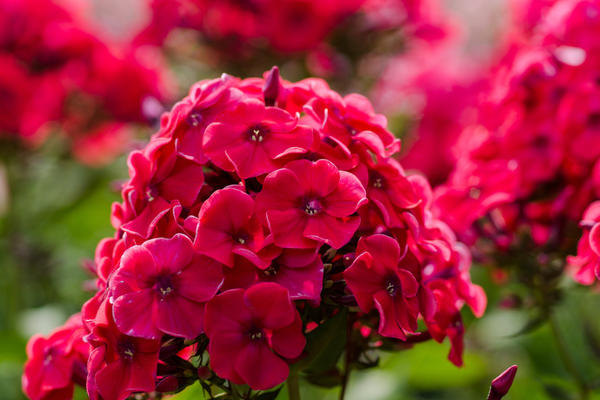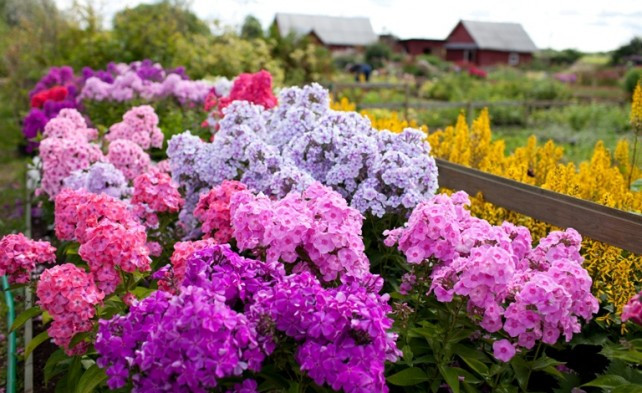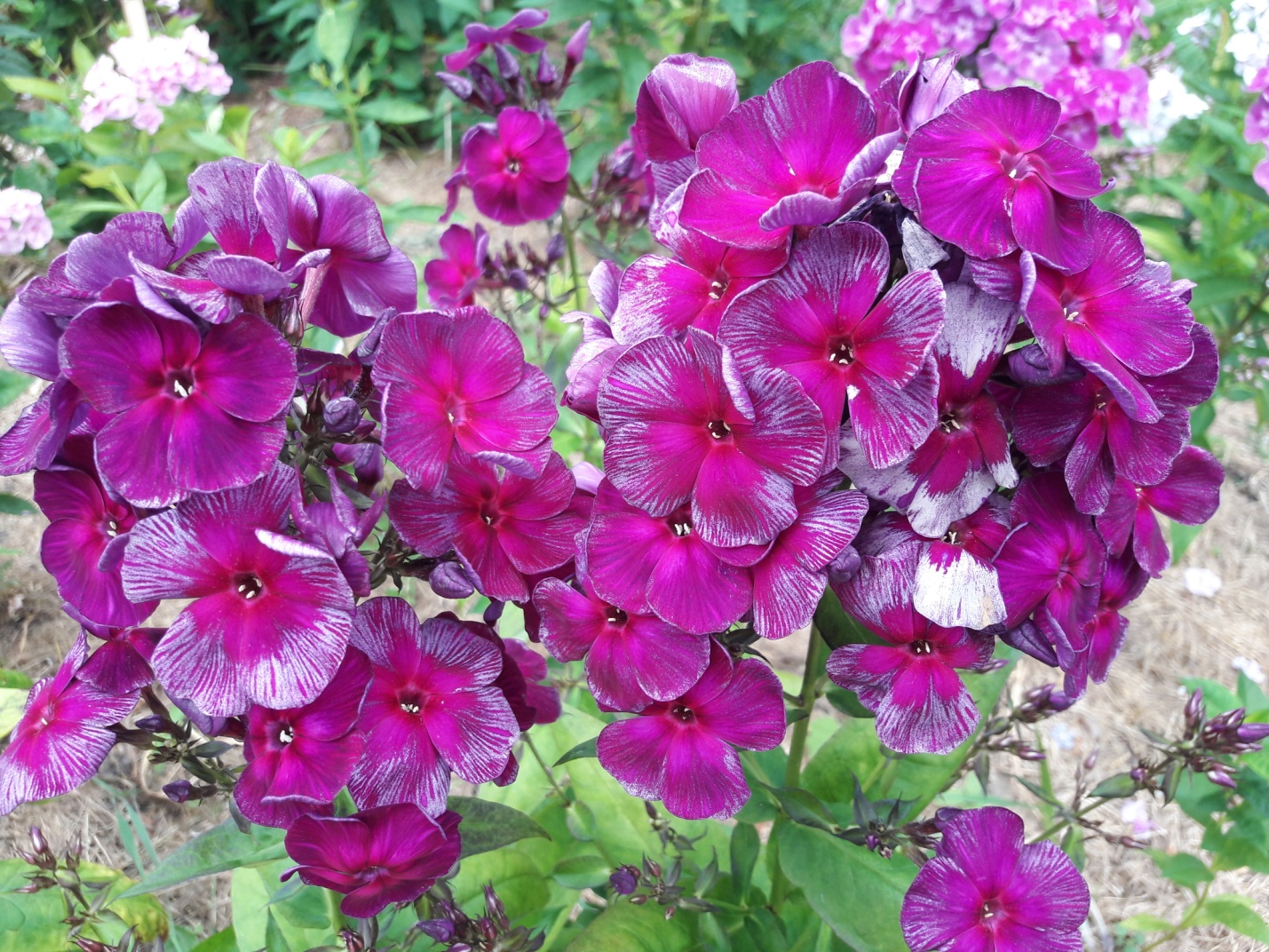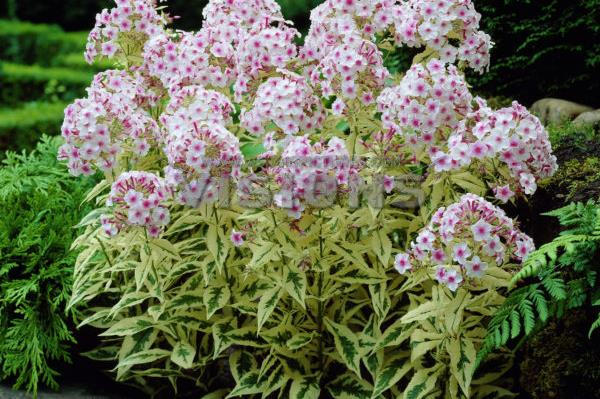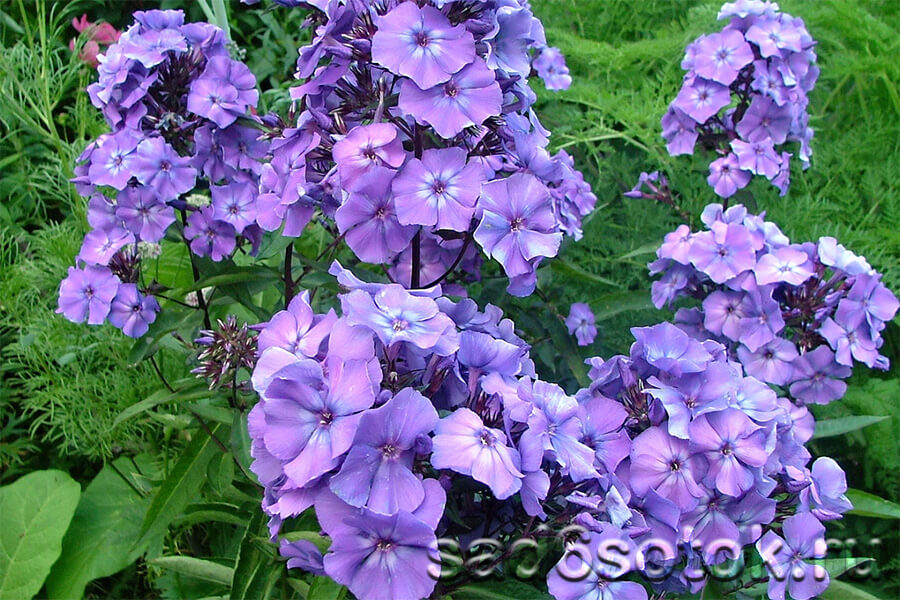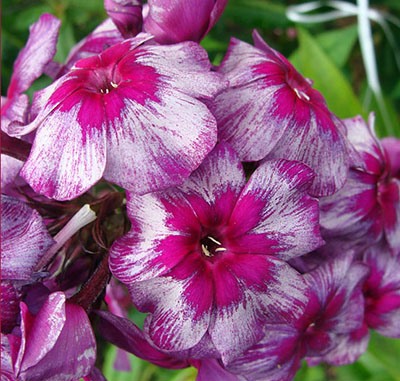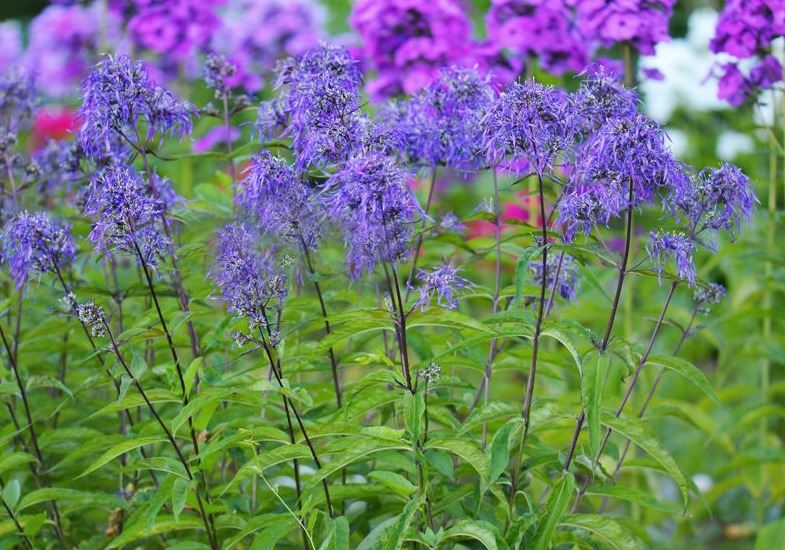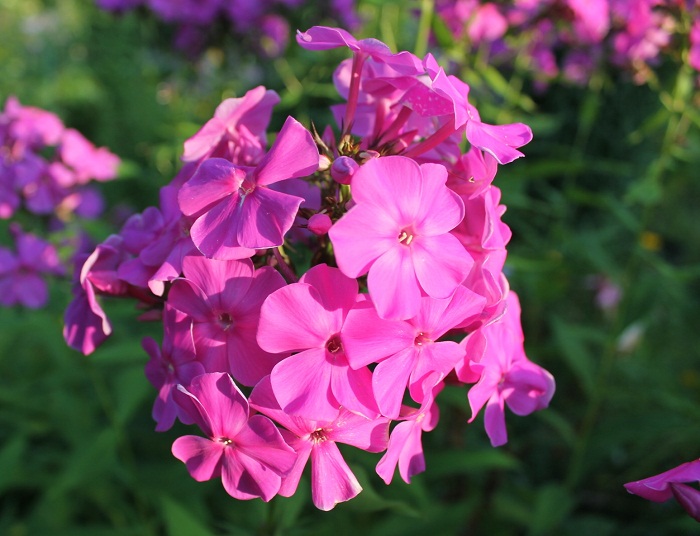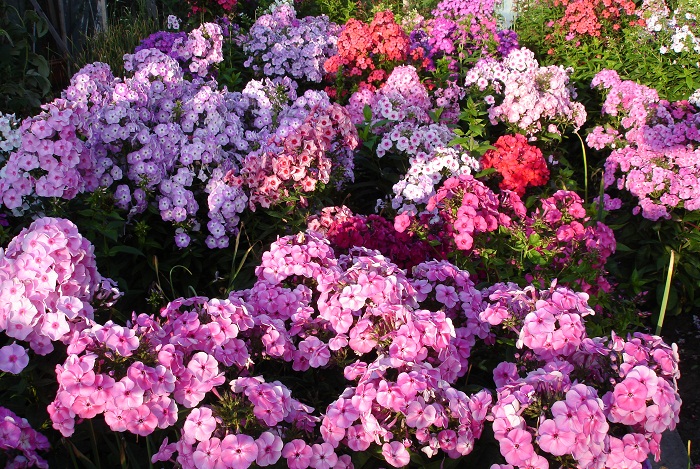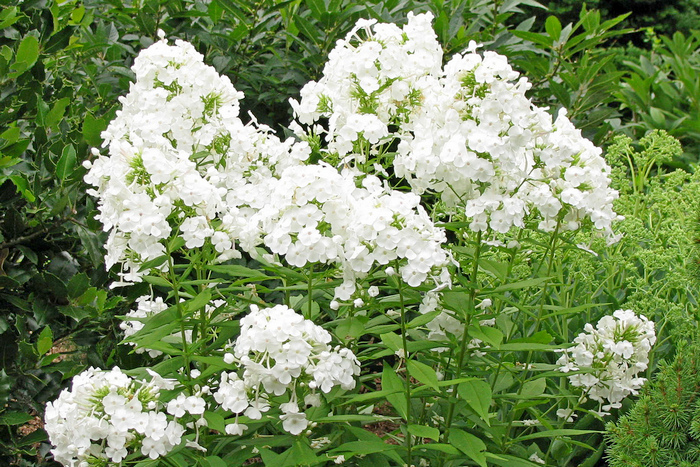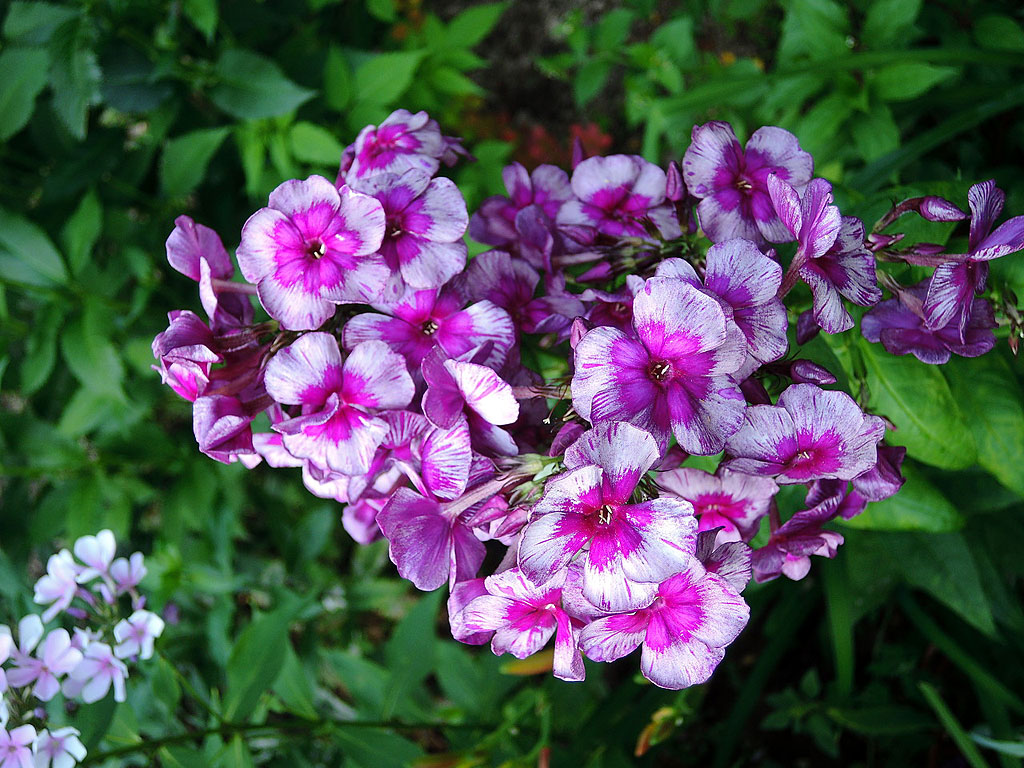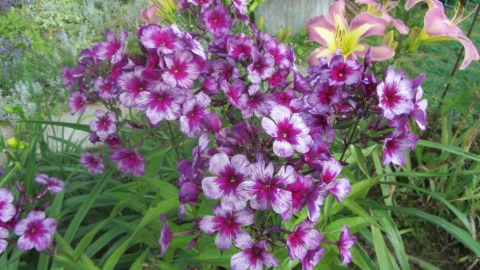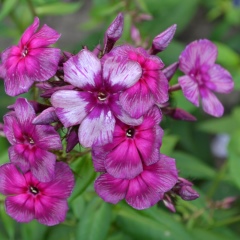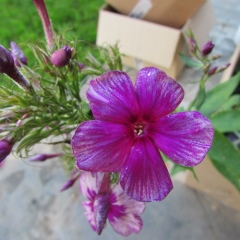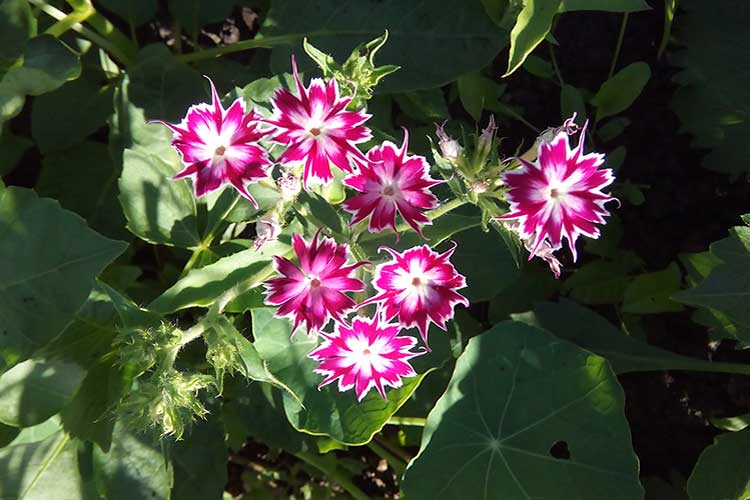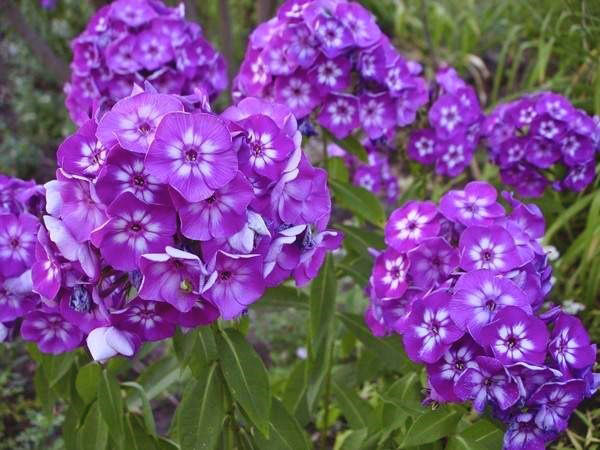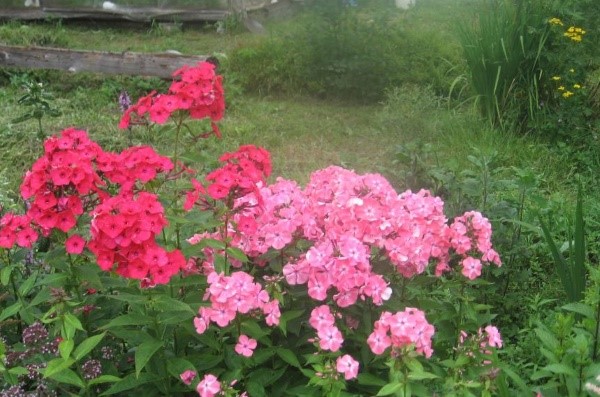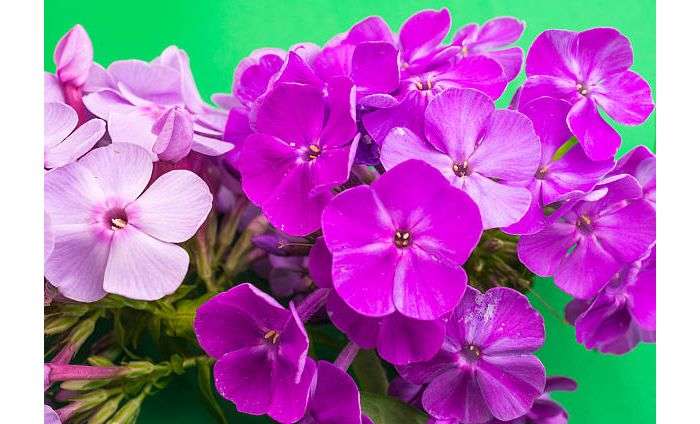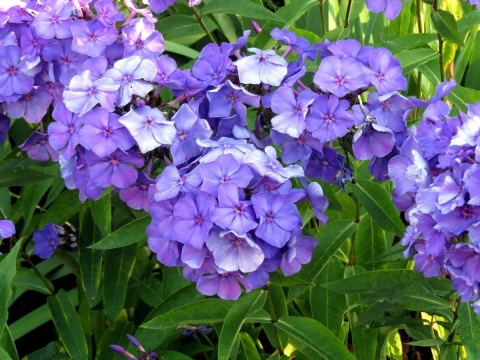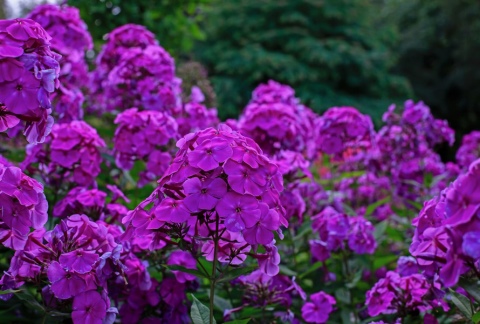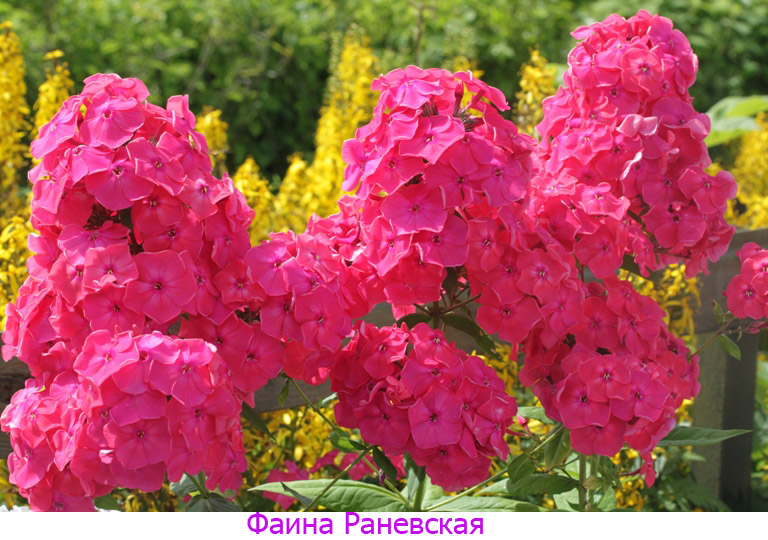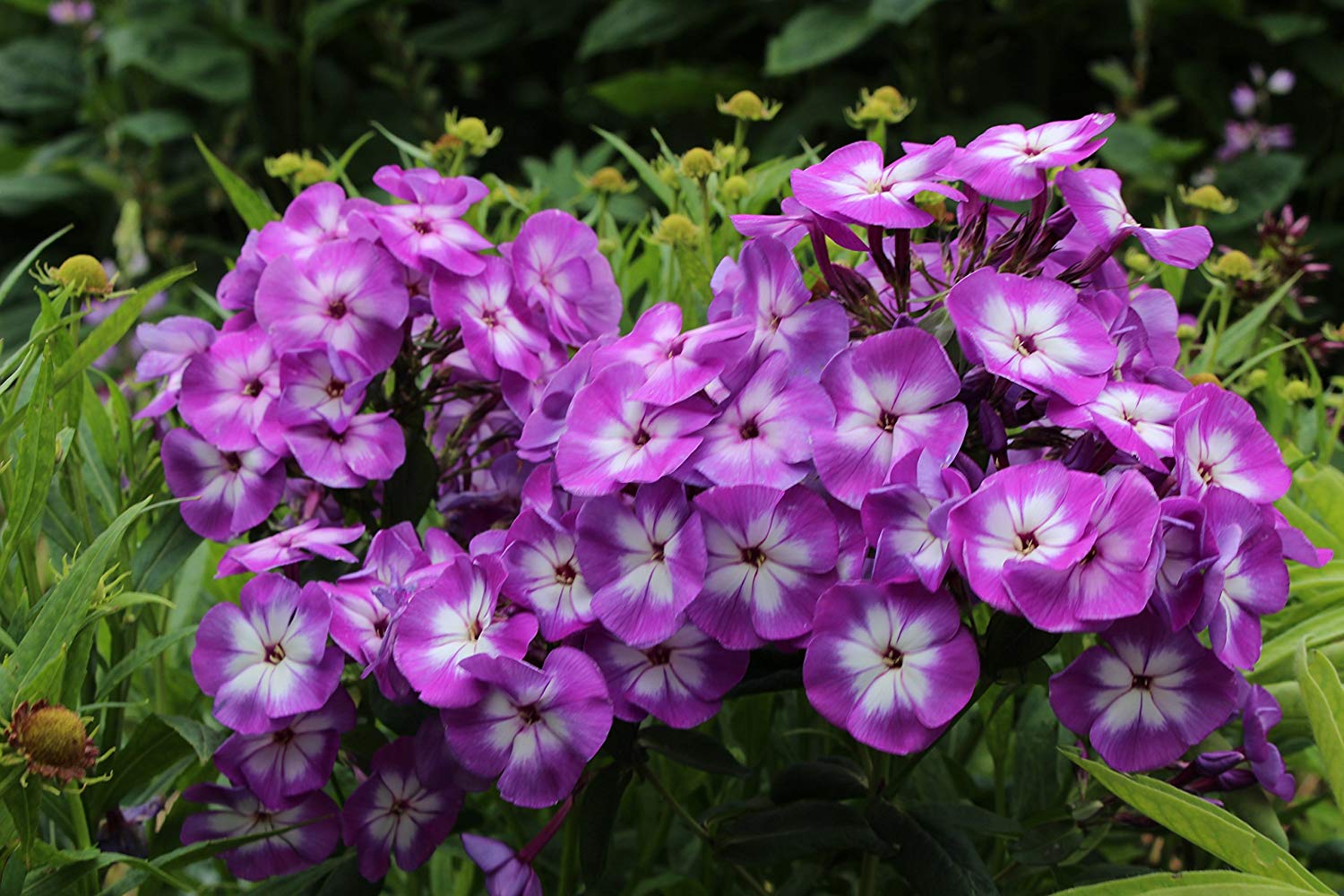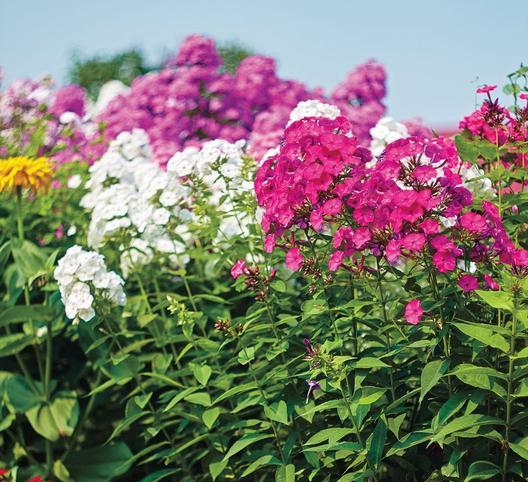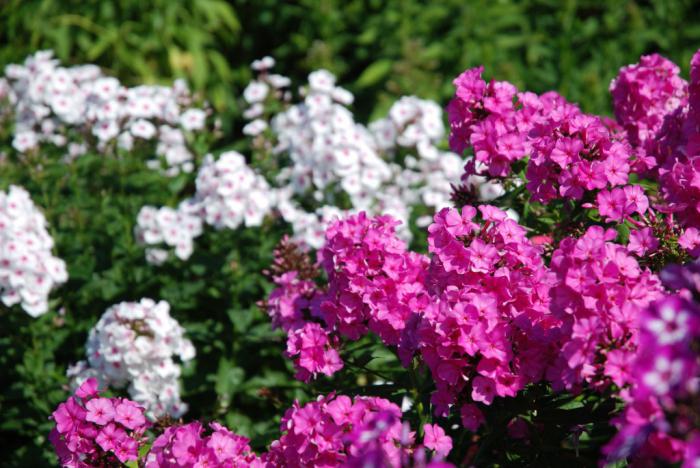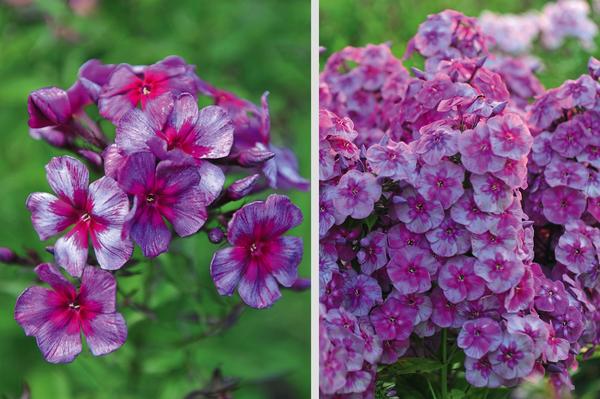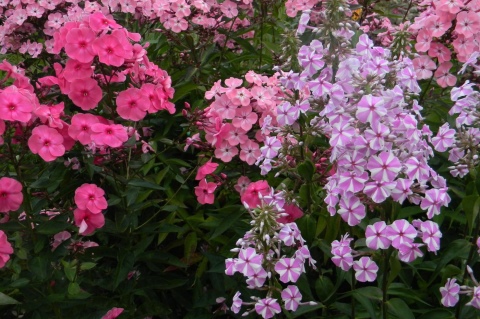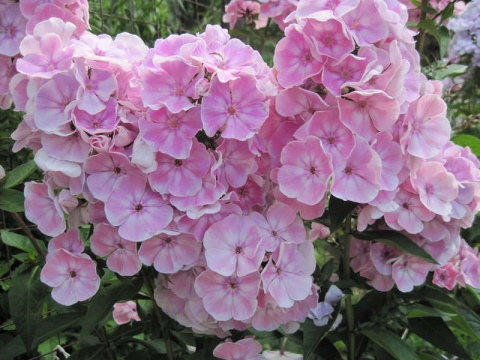Varieties and varieties of phlox
Annual phlox
Phlox Drummond is one of the best annuals among garden flowers. Discovered in Texas and brought to England in 1835 by the English traveler, naturalist and theologian Henry Drummond. In England, the flower took root. Drummond's phlox blooms from June until frost. Its leaves are oval-lanceolate, opposite. Thin branched stem 12 cm to 30 cm tall. Fragrant flowers of purple, dark red, white, yellow, salmon flowers.
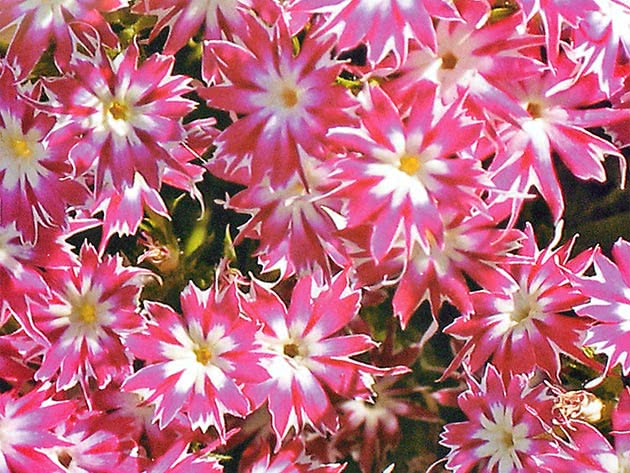 Photo: Phlox Drummond
Photo: Phlox Drummond
Phlox Drummond is presented in two varieties: star-shaped and large-flowered. Drummond's phlox star (Phlox drummondii cuspidata) usually reaches 30-40 cm in height, although dwarf forms are also known - up to 12 cm. The petals of its bright flowers are beautifully dissected, and the flowers look like a star with an eye. Drummond's phlox (Phlox drummondii mixed) grows up to 30cm in height. It has large flowers of various colors, but the red shades are especially attractive.
 Photo: Phlox Drummond
Photo: Phlox Drummond
Some growers divide annual phlox according to their size into large-flowered and dwarf (15-20 cm tall). Large-flowered varieties include High White, High Fire Red, and High Bright Red. Compact low varieties (dwarf) represent the Snow Globe (white), Shamoa (pink), Isabella (yellow), Salmona (salmon), Defiance (fiery red). Both large-flowered species, and stellate, and dwarf species have double and semi-double varieties. Popular are varieties of terry phlox Promis of different shades.

Perennial phlox
Among perennial varieties of phlox, the subulate phlox blooms earlier than anyone else (in May). Its densely branching stems are so abundantly covered with flowers of different shades from snow-white to dark red that you cannot see the narrow, awl-shaped leaves, for which it got its name. This variety of phlox is planted in rockeries and on alpine slides. The splayed phlox also blooms in May, one to two weeks later. Its small bushes with delicate lilac-blue flowers look very elegant.
This species is not as photophilous as subulate phlox, has lignified stems, larger, but less dense leaves. Perennial phlox is still such a species as paniculate phlox, which blooms in mid-summer. This is exactly the phlox that we all know very well: huge fragrant flower caps, beautiful green leaves.
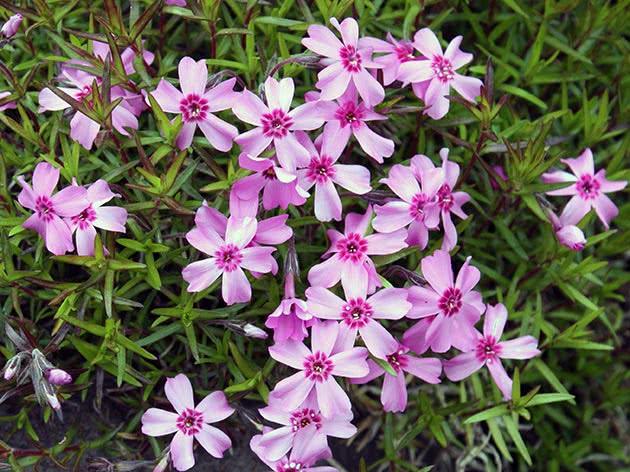 In the photo: Phlox subulate
In the photo: Phlox subulate
 In the photo: Phlox spread out
In the photo: Phlox spread out
Phlox paniculata
The ancestor of many exquisite varieties, including Pure Feelings terry phlox (large inflorescences of white flowers with a green stripe in the center, lilac below; elongated, twisted petals, plant height - 70-80 cm) and terry phlox Natural Feelings (very small white -green-pink flowers, inflorescences resemble a lilac branch). The selection also resulted in such winter-hardy varieties as Orange Perfection (Orange Spat) of orange-red shades that do not fade in the sun. They are easy to breed, easy to care for, and incredibly beautiful. But oddly enough, the most popular among flower growers is the phlox King up to 1 m high with flowers up to 4 cm in diameter in raspberry, pink, lilac, white and other colors.
 In the photo: Phlox terry Tiara
In the photo: Phlox terry Tiara
Phlox subulate: planting and care, description of varieties
After this article, they usually read
Add a comment
Varieties
In their natural environment, splayed phlox grow in the meadows of North America. However, experts did their best and bred a large number of varieties of this beautiful plant that can take root in almost any corner of the earth.
Chattahoochee
It is a perennial plant, which is a short bush.The leaves of such a phlox are very thick, with slightly raised brushes. The flowers are lavender.

"Blue moon"
These phloxes are the lowest. The height of the bush does not exceed 20 centimeters. The flowers are blue-lilac; their diameter does not exceed 4 millimeters. Flowering begins in late May and lasts about a month. But if the bush grows in partial shade, it will last a little longer.
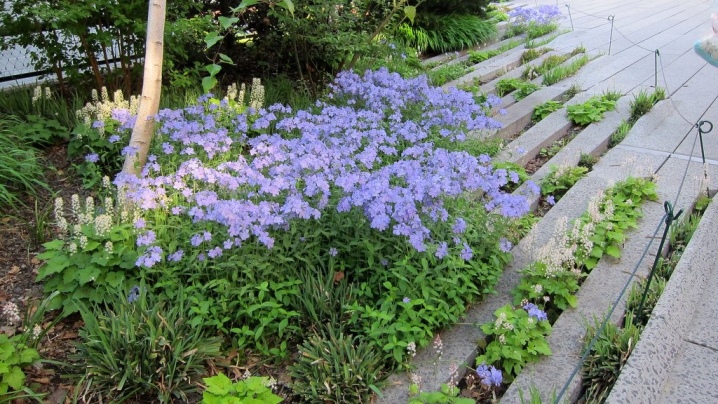
"White perfume"
This variety is a beautiful low-growing plant with dense white flowers. Several flowers can form on one stem at once, the diameter of which does not exceed two centimeters. The height of the bush is 35-40 centimeters. If you plant these phloxes in several rows, then a beautiful white carpet will look as luxurious as possible.
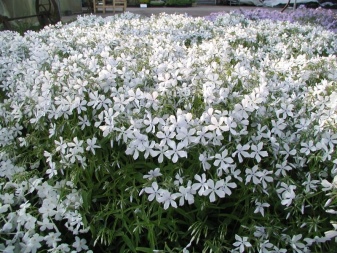
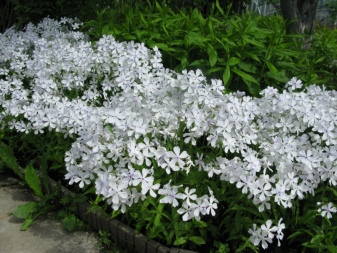
Clouds of Perfume
Such a plant is very often used to create rockeries. The bushes are low, up to 25 centimeters in size. The flowers are quite fragrant; always delight with their pale blue color. Their diameter does not exceed two centimeters.
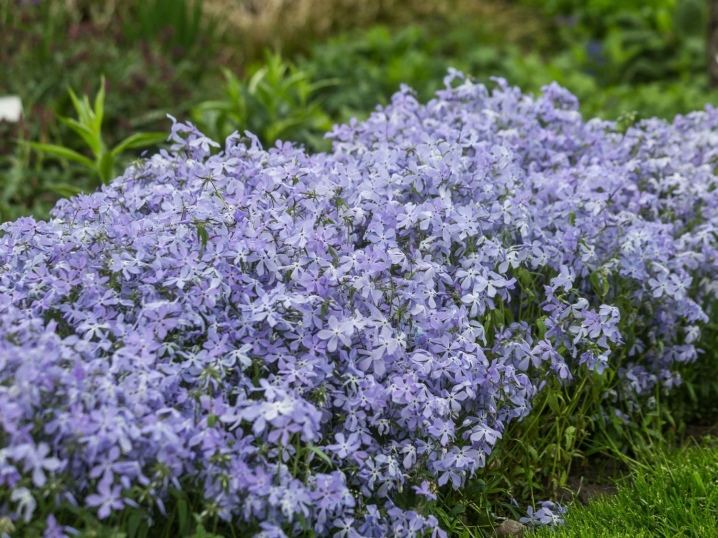
Breeding secrets
The Dragon phlox can be propagated in several ways.
- Division of the bush. This is the most convenient and easiest option. It is recommended to carry out this procedure in the fall or spring months. Divide the mother plant after 3 years of growth. Phlox should be dug up and cut off to 15 cm in height. With a sharp, clean knife, the mother bush is divided into several new plants so that each has buds on the stems. The bushes planted in this way bloom the next year.
- Cuttings. Phlox "Dragon" can also be propagated by cuttings. To do this, choose a strong branch. Next, you need to take the middle of the stem and carefully cut off the stalk with two internodes using a secateurs. After planting in the soil, it is watered and covered with a plastic container. After 2-3 weeks, the cutting will give roots.
- With the help of seeds. This is a less popular breeding method. The seeds are harvested in the fall, when the ripe boll turns brown. They should be planted in open loose soil immediately, as they can quickly lose their germination.
Necessary care
Caring for phlox Dragon is very simple. The bushes will be able to live even without fertilization and abundant watering. But to maintain a lush and long flowering, you will sometimes need to make additional fertilizing and regularly moisten the soil.
Watering and feeding
Phloxes cannot take water from the deep layers of the soil, therefore, in the absence of rain, it is worth watering them weekly, and in case of drought - 2 times a week. Adult bushes can be given 1 bucket of water, young ones - half. Beforehand, it is better to defend it and heat it to room temperature.
Fertilizers are applied 3 times per season:
- In the spring, they give nitrogen fertilizing - they allow you to quickly recover after winter, start growth processes.
- During bud formation, superphosphates and potassium salt are needed.
- A similar dressing can be given during flowering (1-2 times with an interval of 3 weeks).
Advice! Phlox Dragon is responsive to feeding with wood ash, which can be alternated with superphosphates and potassium salt. Thanks to this fertilizer, the flowers become brighter in color.
Thanks to top dressing, phlox bloom lasts more than 1.5 months.
Weeding and loosening
You need to weed the flower beds as needed. In order to keep as few weeds as possible on them, it is recommended to lay a layer of mulch. Loosening is worth 2-3 times a month, especially after fertilization. Then the nutrients will penetrate the root system faster.
Winter preparation and pruning
Phlox Dragon tolerates frost well, so it does not need a special shelter for the winter. However, it is still necessary to prepare the bush for winter. To do this, in September, it is completely cut off, leaving shoots 5-10 cm high, watered abundantly (a month before frost). Can be mulched with fallen leaves, peat, straw (especially in the Urals and Siberia).

